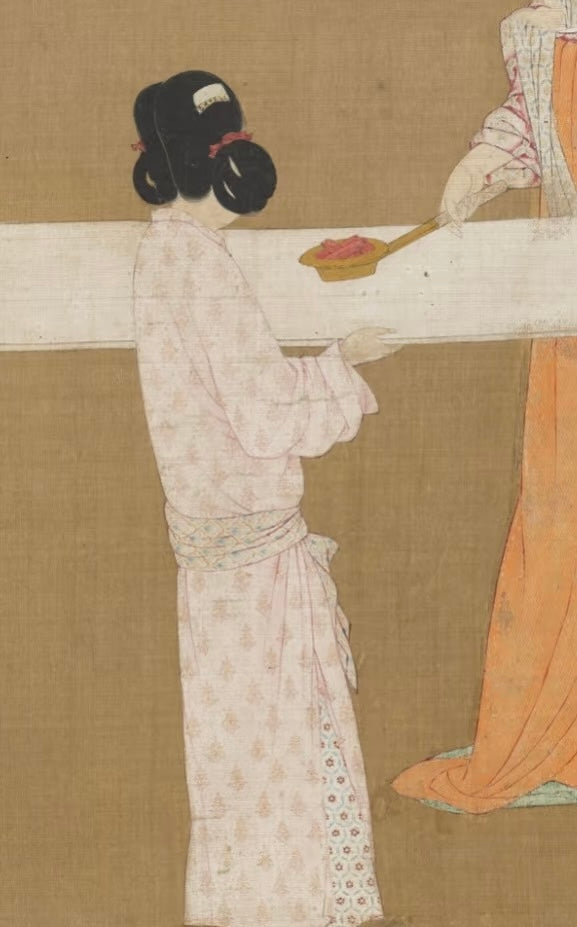
The Most Complete Guide to Hanfu: China’s Top Timeless Traditional Clothing
Understanding Hanfu: The Meaning Behind the Name
Hanfu (汉服), literally translated as "Han people's clothing," refers to the historical dress style worn by the Han ethnic group, the dominant group in Chinese civilization. Unlike the qipao or cheongsam, which evolved later, Hanfu dates back over 3,000 years and served as the standard clothing throughout multiple Chinese dynasties.
The term "Hanfu" emerged during the Han Dynasty (206 BC–220 AD) and has since become a cultural symbol of identity and tradition. It was never just about aesthetics — it was a reflection of Confucian values, social order, and cosmological beliefs.

Hanfu's Global Influence on Fashion
Hanfu’s influence extended far beyond China’s borders. It inspired the kimono in Japan, the hanbok in Korea, and the áo giao lĩnh in Vietnam. The flowing sleeves, cross-collar design, and layered structure created a unique silhouette that continues to inspire designers globally — especially in the rising vintage aesthetic trend that blends the old with the modern.
For more on the lasting power of vintage design, visit this article on vintage aesthetic and the digital world.
The Dynastic Timeline of Hanfu and Its Key Features
Han Dynasty (206 BC – 220 AD)
- Features: Wide sleeves, cross-collar robe (jiaoling youren), tied with a sash.
- Style: Modest, emphasizing natural drape and ritualistic simplicity.
Tang Dynasty (618–907)
- Features: High waist skirts (qixiong ruqun), short blouses (duijin), extravagant embroidery.
- Style: Open, luxurious, and influenced by Silk Road cultures.
Song Dynasty (960–1279)
- Features: Simpler design, narrow sleeves, long robes for scholars.
- Style: Elegant and restrained, often associated with literati.
Ming Dynasty (1368–1644)
- Features: Structured shoulders, stand-up collars, round neck robes.
- Style: Balanced between ceremonial and practical wear.
Modern Meaning and Revival of Hanfu
Today, hanfu is undergoing a revival among younger generations, not only in China but globally. It symbolizes cultural pride, personal expression, and a way to connect with tradition in a digital world. Many wear hanfu during festivals, weddings, or casual outings — blending heritage with modernity.
For example, pairing hanfu-inspired outer layers with basic tees like the Topology T-Shirt can give your outfit a unique fusion flair.
Tips for Wearing Different Dynastic Hanfu
- Han Dynasty: Keep the accessories minimal, focus on fabric flow and modesty.
- Tang Dynasty: Heavier makeup and floral hair accessories are common; perfect for cultural events.
- Song Dynasty: Go for neutral colors and simple hair buns for a quiet, refined look.
- Ming Dynasty: Add modern shoes or bags to make the look more street-style compatible.
Modern Changes to Hanfu Design
Contemporary hanfu designers are introducing:
- Zippered versions for ease
- Modern cuts and pockets
- Breathable fabrics suitable for daily wear
- Mix-and-match styles with jeans, sneakers, or even athleisure
This evolution makes hanfu more inclusive and accessible for all genders and ages, appealing to a generation interested in identity, aesthetics, and comfort.
Where to Buy Hanfu Online
Some reputable hanfu eCommerce stores include:
- Hanfu Story – Offers authentic designs by historical period
- Newhanfu.com – Ideal for beginners with educational content and curated kits
- Etsy – Independent hanfu designers from all over the world
- AliExpress – Budget-friendly, wide variety, but quality may vary
Typical Price Range of Hanfu
Prices vary depending on design complexity and fabric:
- Entry-level casual hanfu: $30 – $80 USD
- Formal/reproduction-grade hanfu: $100 – $300 USD
- Custom ceremonial pieces: $400+ USD
For minimalist and breathable daily pieces to pair with your hanfu, check out the Topology basic white T-shirt, designed for layering and comfort.
Conclusion: Hanfu in a Contemporary World
As the fashion world turns toward cultural appreciation and slow style, hanfu represents more than just a piece of clothing — it’s a movement. Whether you wear it for heritage, beauty, or curiosity, the meaning of hanfu continues to evolve while staying rooted in thousands of years of storytelling.
So next time you scroll through aesthetic fashion inspiration, remember: some trends are not new — they’re timeless.


